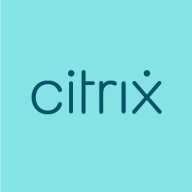

Citrix Endpoint Management and Microsoft Intune are contenders in enterprise mobility management. While Citrix offers advantages in pricing and customer support, Microsoft Intune often has an edge due to its robust features, valuable for organizations heavily invested in Microsoft ecosystems.
Features: Citrix Endpoint Management offers advanced VPN access controls, granular application management, and flexible policy settings. Microsoft Intune is distinguished by its seamless integration with the Microsoft ecosystem and advanced analytics capabilities. Citrix provides versatility and customizability, whereas Intune delivers a comprehensive suite for Microsoft-integrated organizations.
Room for Improvement: Citrix Endpoint Management could enhance its cloud integration, reporting features, and user interface to match modern expectations. Microsoft Intune might benefit from improved cross-platform compatibility, expanded Android device support, and a less complex licensing model. Both solutions can advance their user experience and simplify policy management.
Ease of Deployment and Customer Service: Citrix Endpoint Management offers flexible deployment options and responsive support, facilitating adaptability for businesses. In contrast, Microsoft Intune leverages Azure's cloud infrastructure, providing smooth deployments particularly for organizations deeply embedded in the Microsoft environment. Citrix emphasizes personalized support, whereas Intune enhances integration within Microsoft surroundings.
Pricing and ROI: Citrix Endpoint Management is competitively priced, balancing setup costs with potential ROI through tailored device management. Meanwhile, Microsoft Intune, with higher initial expenses, justifies the investment via productivity and IT efficiency, particularly for those already utilizing Microsoft platforms. Citrix centers on cost-effectiveness, while Intune focuses on delivering comprehensive value returns.
After implementing Citrix Endpoint Management, there is a return on investment for my customers because we provide three services: first is the license, where we got margin; second, deployment service, which typically has two types—one where Citrix will do the deployment and the other where a partner should do it, and we deploy this solution for about 80% of the customers in India; third is after deployment support.
Everything we've gained from it makes my job easier day after day, and I see value in it as an engineer.
Microsoft Intune not only saves costs by reducing the number of personnel needed but also offers a comprehensive solution for managing laptops, applications, security, individual access, and enrollment.
Importantly, when someone leaves the company, it helps protect document access on their devices.
Technical support for Citrix Endpoint Management is not satisfactory.
This product requires some mature understanding, so sometimes they can handle small problems, but for major or architecture-related issues, their L3 or our L3 engineer helps them understand the problem.
The support from Citrix has been satisfactory.
When a support ticket is submitted, it directly reaches someone with Intune support expertise.
When I contacted Microsoft, they had the same expertise, if not more, which is phenomenal because I felt heard and my problem was solved.
Sometimes, the support provided is excellent, and the representative is knowledgeable, while other times, the service needs improvement.
My colleagues using iOS have faced issues, such as logging problems requiring frequent password entries.
The scalability of Microsoft Intune is ten out of ten.
Ideally, we want to automatically segregate devices based on user properties like primary use, but currently, dynamic groups seem limited to device properties.
It supports organizations with 200 endpoints and those with more than 15,000 endpoints.
The solution's stability is below expectations.
The solution is stable, though there are occasional restarts, which are not critical.
We have not experienced downtime, bugs, or glitches.
It appears Microsoft Intune undergoes changes without informing customers.
Microsoft Intune has been very stable.
The main issue is the change from perpetual licenses to subscription-based ones, which has increased our costs significantly.
With AI being present, they may increase some AI-related features in the future.
The units are not updating the operating system as specified in the policy.
Features like unlocking devices sometimes fail, and the support offered for other operating systems is insufficient.
There are communication issues, so you might start working with a feature without knowing if it will be deprecated six months from now.
Many third-party companies offer single-pane-of-glass reporting that shows you what your update environment looks like, how your patch is doing, application status, etc., but Intune's reporting is not intuitive.
The switch to subscription-based licensing has made it much more expensive.
For this client, the solution has been quite cheap.
The setup cost pricing for Citrix Endpoint Management varies; I can say $3,000 per user license for setup.
Introductory professional services, like a fast-track service, were included with our E5 membership, and there have been no additional costs.
The Intune suite and add-ons, such as batch management and remote help, are costly.
It costs approximately forty euros per user per month.
We have found the ability to manage user accounts on shared devices valuable as it reduces the need for multiple licenses, which saves costs.
The change to a subscription-based model has removed the financial benefit we previously had.
Intune excels in configuration and compliance management for Windows 10, ensuring devices receive timely updates and adhere to organizational standards.
Dynamic groups allow us to set conditions for automatic membership, eliminating the need for user intervention or manual review and ensuring a seamless workflow.
Windows Autopatch is the most valuable because it removes the burden of patch management.
| Product | Market Share (%) |
|---|---|
| Microsoft Intune | 31.0% |
| Citrix Endpoint Management | 2.0% |
| Other | 67.0% |


| Company Size | Count |
|---|---|
| Small Business | 6 |
| Midsize Enterprise | 3 |
| Large Enterprise | 5 |
| Company Size | Count |
|---|---|
| Small Business | 116 |
| Midsize Enterprise | 46 |
| Large Enterprise | 152 |
XenMobile is a comprehensive solution to manage mobile apps, data and devices, available both on-premises and in the cloud. Users have single-click access to all of their apps from a unified corporate app store and IT can easily configure, secure and support mobile devices. With XenMobile technology, IT can meet their compliance and control needs while giving users the freedom to experience work and life their way.
Microsoft Intune provides centralized management of mobile devices and applications, ensuring security, compliance, and productivity through integration with Microsoft services like Microsoft 365 and Azure Active Directory.
Organizations use Intune for managing mobile devices and applications, enhancing security and compliance across platforms. With features like single sign-on, conditional access, and zero-touch deployment via Autopilot, it facilitates efficient operations. Intune's scalability, easy enrollment, and capabilities such as remote wipe support diverse device management, offering robust data protection and efficient operation. Despite its features, improvement areas include reporting, compatibility with non-Microsoft devices, and better support for macOS and Linux devices.
What are the key features of Microsoft Intune?
What benefits should users look for in reviews?
In industries such as finance, healthcare, and education, Microsoft Intune is implemented to ensure secure and compliant device management. Companies leverage its capabilities to deploy security policies and manage both corporate-owned and BYOD environments, facilitating a unified approach to data protection and compliance.
We monitor all Unified Endpoint Management (UEM) reviews to prevent fraudulent reviews and keep review quality high. We do not post reviews by company employees or direct competitors. We validate each review for authenticity via cross-reference with LinkedIn, and personal follow-up with the reviewer when necessary.